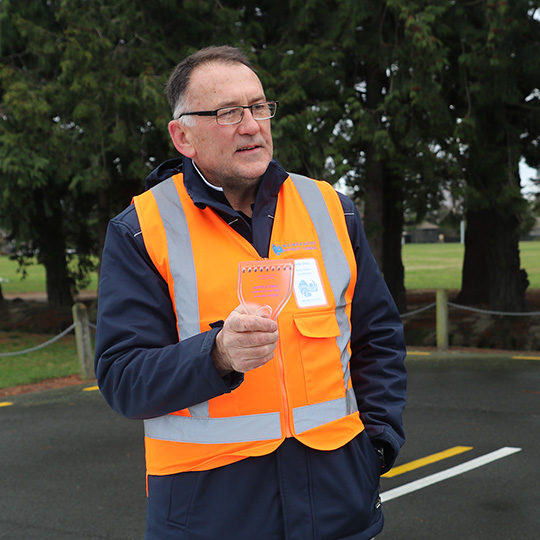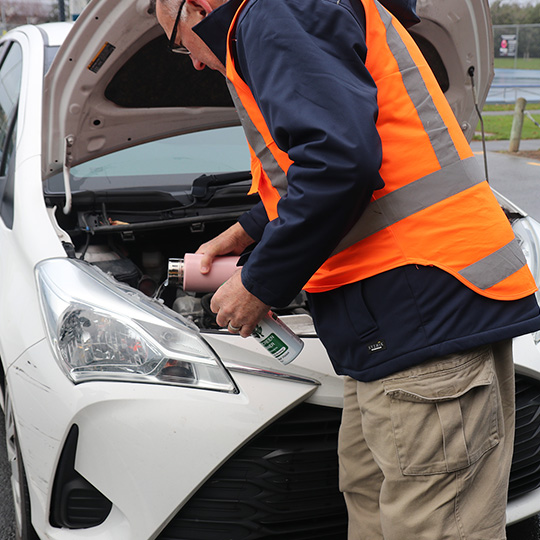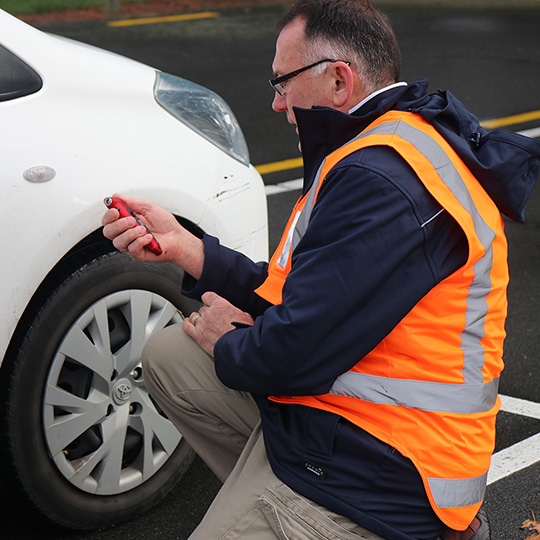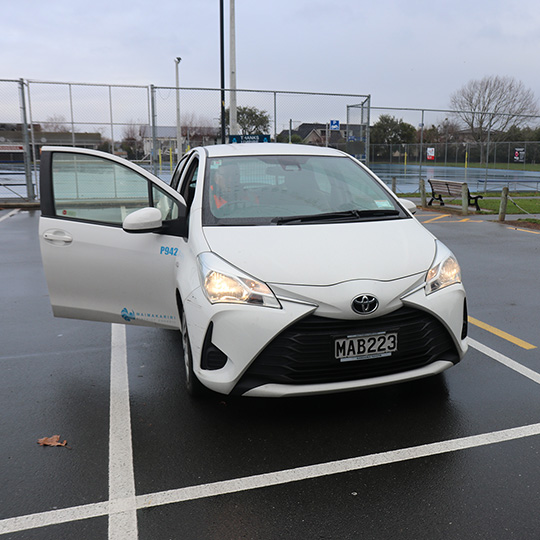Winter is here, and while we’ve probably had plenty of practise driving in wintry conditions, how good are we at making sure our vehicles are ready for ice, rain, and fog?
Council’s Road Safety Coordinator Peter Daly shares some simple things we can do to maintain a safe vehicle for driving in all sorts of weather.
Clearing ice off your windscreen
Pouring hot water on your windscreen to clear ice might sound like a fast solution, but Peter says don’t do it!
“Otherwise, you risk breaking your windscreen,” he says.
“If you’re going to put water on your windscreen to clear ice – make it no more than warm water. And if you are doing that, take the time to clear your side windows and headlights, which also freeze if your windscreen has.”
Tips for clearing ice:
- Put a towel over your windscreen overnight to prevent ice forming in the first place
- Use an ice scraper for your windscreen and windows
- Keep your ice scraper in your glovebox for when you need it
- Use your air-con in conjunction with your heater to clear condensation from inside the windows.
Peter also suggests keeping your window washer fluid topped up and adding some Bar’s Bugs or a similar windscreen cleaner to help clear road film, diesel spray and bugs.
“It’s super important in winter, as the sun being low in the sky can make a dirty windscreen very hard to see through.”
Checking your tyre pressures
Good tyre air pressure ensures that tyres wear evenly and provide a smooth ride.
Peter says, “The best tyre pressure for your car will be advised in the car’s handbook or, in some cars, on the sticker inside the doorframe. Google should also be able to tell you.
“Generally, though, 30 – 32 PSI (pound per square inch) is a good tyre pressure for most tyres on most cars.”
Why good tyre pressure helps:
- It will save you money – if you have the right tyre pressures, your car will use less fuel
- Your tyres won’t wear out as quickly
- It will improve the handling of your car, especially in the wet.
Peter suggests checking your tyres every couple of months to ensure you have the right PSI.
Turning headlights on for fog
Always remember to actively turn your headlights on for fog, even if your car has an auto light sensor. While Peter says the automatic function on some of the newer cars has its benefits, auto headlights can’t detect fog.
“That’s why you’ll see some newer cars driving around in fog with no lights on during the day.
“On really foggy days – especially if you’re going up and down big, long roads like Tram Road – the car is going to think there’s enough daylight, so the car turns the lights off.
“You have to actively make sure that you have your lights on during fog. Not so that you can see but so the other people can see you.”
Checking your taillights
The lights at the back of your car are just as important as the front. However, drivers will often only discover that a taillight is out when they take their car for its next warrant of fitness.
“But that can be the first three years of a vehicle's life for new vehicles, or once a year for most vehicles.
“You cannot just wait until you go for a warrant of fitness to find out that you’ve got a light not working – you’ve got to have a look from time to time.”
Peter says the easiest way to do this is with two people – one person in the car operating the indicators, headlights and brakes, while the other stands behind the car checking that all the taillights work.
More information:
For more information about staying safe on the road during winter, visit the New Zealand Transport Agency Waka Kotahi website or see the AA’s Winter Driving Tips.
| Stay informed, stay involved. Subscribe for early access to our newsletter and exclusive Council Project & Community updates. Subscribe now |
|---|




